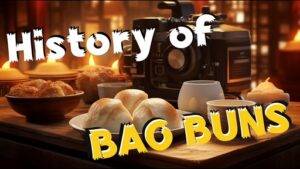The world of gastronomy is a dynamic one, constantly evolving to meet the ever-changing tastes of food enthusiasts. As the culinary landscape continues to shift, certain dishes gain popularity and capture the imagination of chefs and foodies alike. Among these culinary stars, bao, a delightful and versatile Asian street food, has risen to prominence, becoming the next big thing in fashion for food lovers worldwide.
In this article, we will take you on a flavorful journey through the world of bao, exploring its origins, diversity, and its meteoric rise in popularity. Let’s delve into what makes bao the next “it” dish in the culinary world.
The Origins of Bao: A Bite-Sized History Lesson

- A Chinese Legacy: Bao, also known as baozi or simply “bao,” is a type of steamed or baked bun originating from China. It has a rich history dating back thousands of years to the Han Dynasty.
- Bao Varieties: Traditional Chinese bao comes in various shapes and fillings. The two most common types are the baozi, with a smooth, round shape and a variety of fillings, and the mantou, a plain, fluffy bun served as an accompaniment to other dishes.
Bao’s Global Journey: From Street Food to High-End Cuisine
- Street Food Sensation: Bao has long been a staple of Chinese street food, loved for its portability and affordability. It’s a quick and delicious snack that’s enjoyed by people on the go.
- Bao Fusion: In recent years, bao has transcended its humble origins. Chefs and food entrepreneurs worldwide have embraced this Chinese delight, creating their own unique interpretations by infusing it with diverse flavors from around the world.
The Bao Revolution: Modern Varieties and Flavors
- Classic Favorites: The traditional bao fillings, such as pork, chicken, and vegetarian options, continue to be popular. These classic varieties are a favorite among purists.
- Creative Twists: To keep up with the evolving palate of modern diners, chefs are experimenting with inventive bao fillings, including seafood, barbecue, and even dessert options.
- Global Influences: Bao now reflects the flavors of the world, with bao tacos, Korean-inspired bao, and other exciting variations taking the food scene by storm.
Bao: The Perfect Instagram-Worthy Dish
- Visual Appeal: Bao’s unique appearance, with its soft, fluffy exterior and flavorful fillings, makes it a photogenic dish that’s perfect for social media.
- Vibrant Colors: The colorful ingredients and artistic presentation of modern bao dishes make them a visual delight, drawing foodies and influencers alike.
Bao Goes High-End: Fine Dining with a Twist
- Upscale Bao Restaurants: The bao trend has infiltrated the fine dining scene, with upscale restaurants offering gourmet versions that cater to the most discerning palates.
- Pairing with Wine and Spirits: High-end bao establishments have elevated the dining experience by pairing bao with fine wines and artisanal cocktails, providing a fusion of flavors that is nothing short of extraordinary.
Bao at Home: Mastering the Art of Bao Making
- DIY Bao: The love for bao has inspired many to try their hand at making these delightful buns at home. With the right ingredients and a bit of practice, anyone can create homemade bao.
- Online Recipes and Tutorials: The internet is a treasure trove of bao recipes and instructional videos, making it easier than ever for home cooks to explore this culinary trend.
As we’ve explored the origins, transformations, and global impact of bao, it’s clear that this iconic Chinese dish has evolved into a global culinary sensation. From its humble beginnings as street food to its adoption in high-end dining, bao continues to captivate food enthusiasts and is poised to be the next big trend in the culinary world.
Whether you’re indulging in classic pork bao, savoring innovative fusion creations, or trying your hand at making bao at home, the allure of bao is undeniable. So, embrace the bao trend, share your bao creations on social media, and join the ever-growing community of bao enthusiasts in celebrating this fashionable food phenomenon.


